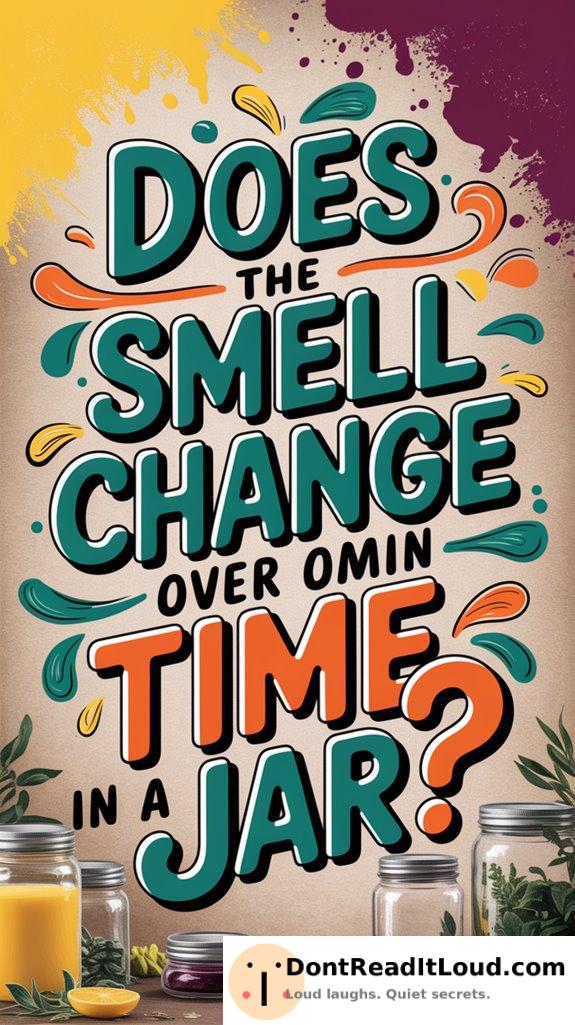
Yes, the smell inside a jar changes over time, even with a tight seal. The strongest scent is noticeable at first, but lighter aroma molecules gradually fade. Heavier scent components tend to linger longer. Temperature, light, and the type of lid also influence how the fragrance develops. Even in cool, dark storage, some scent change will still happen. With careful storage, you can slow down or affect how the smell evolves.

When you seal something inside a jar, its smell doesn’t stay the same for long. Even though you might expect the aroma to be preserved perfectly, the reality is that jar storage sets the stage for fragrance evolution. The moment you close the lid, you’re trapping volatile compounds that make up the scent, but those molecules don’t just pause in time. They interact, break down, and sometimes combine in new ways, shifting the overall smell inside the jar.
You may notice that the initial fragrance is usually the strongest and most recognizable. Over days or weeks, though, it starts to mellow. That’s because some of the lightest, most volatile scent molecules escape or degrade faster than others. You’re left with heavier, more stable notes that can dominate the aroma profile. When you open the jar after a while, the scent might seem different—sometimes deeper, sometimes flat, and not as bright as you remember.
If you’re storing herbs, spices, or even coffee beans, jar storage can both protect and alter what you smell. Airtight jars slow down the process of oxidation, but they don’t stop it completely. Oxygen can still seep in, and even minimal exposure can trigger chemical changes. If you use a clear jar and leave it in the light, you’ll also speed up fragrance evolution since light can help break down certain compounds. That’s why you’re often advised to use dark jars or store them in cool, dark places.
Temperature is another important factor. If your jar is in a warm spot, chemical changes happen faster. Scents may become musty or stale as time goes on. In cooler conditions, the fragrance changes more slowly, so you’ll notice less difference, but some evolution still occurs. The jar lid material also matters. Metal lids can sometimes react with the contents, especially if they’re acidic, while plastic lids may absorb odors and affect the scent.
You can’t completely halt the changes, but you can slow them. Store your jars in a cool, dark cupboard and keep them tightly sealed. When you do open the jar, you’ll notice that the scent has evolved—sometimes subtly, sometimes dramatically. This transformation is natural and influenced by the chemistry of the contents, the environment, and the jar itself.
Conclusion
Over time, the scent inside a jar can noticeably shift. Exposure to air, light, and temperature changes may cause aromas to fade, strengthen, or become unpleasant. You might expect a familiar smell, but find something unexpected instead. Even in a sealed jar, change is inevitable. Always check before using the contents, as the scent may have evolved.



